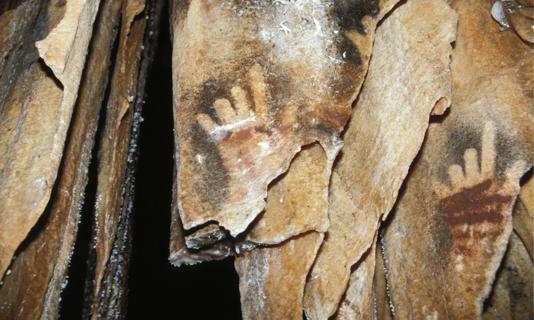Robin McKie
Sourc e - Many prehistoric handprints show a finger missing. What if this was not accidental? (msn.com)
 Photograph: Fanny Broadcast/Gamma-Rapho/Getty Images© Photograph: Fanny Broadcast/Gamma-Rapho/Getty Images
Photograph: Fanny Broadcast/Gamma-Rapho/Getty Images© Photograph: Fanny Broadcast/Gamma-Rapho/Getty Images
Men and women might have had their fingers deliberately chopped off during religious rituals in prehistoric times, according to a new interpretation of palaeolithic cave art.
In a paper presented at a recent meeting of the European Society for Human Evolution, researchers point to 25,000-year-old paintings in France and Spain that depict silhouettes of hands. On more than 200 of these prints, the hands lack at least one digit. In some cases, only a single upper segment is missing; in others, several fingers are gone.
In the past, this absence of digits was attributed to artistic licence by the cave-painting creators or to ancient people’s real-life medical problems, including frostbite.
But scientists led by archaeologist Prof Mark Collard of Simon Fraser University in Vancouver say the truth may be far more gruesome. “There is compelling evidence that these people may have had their fingers amputated deliberately in rituals intended to elicit help from supernatural entities,” said Collard.
Nor was the habit unique to one time or place, he added. “Quite a few societies encourage fingers to be cut off today and have done so throughout history.”
Collard cited the Dani people from the New Guinea Highlands. “Women there sometimes have one or more fingers cut off following the death of loved ones, including sons or daughters. We believe that Europeans were doing the same sort of thing in palaeolithic times, though the precise belief systems involved may have been different. This is a practice that was not necessarily routine but has occurred at various times through history, we believe.”